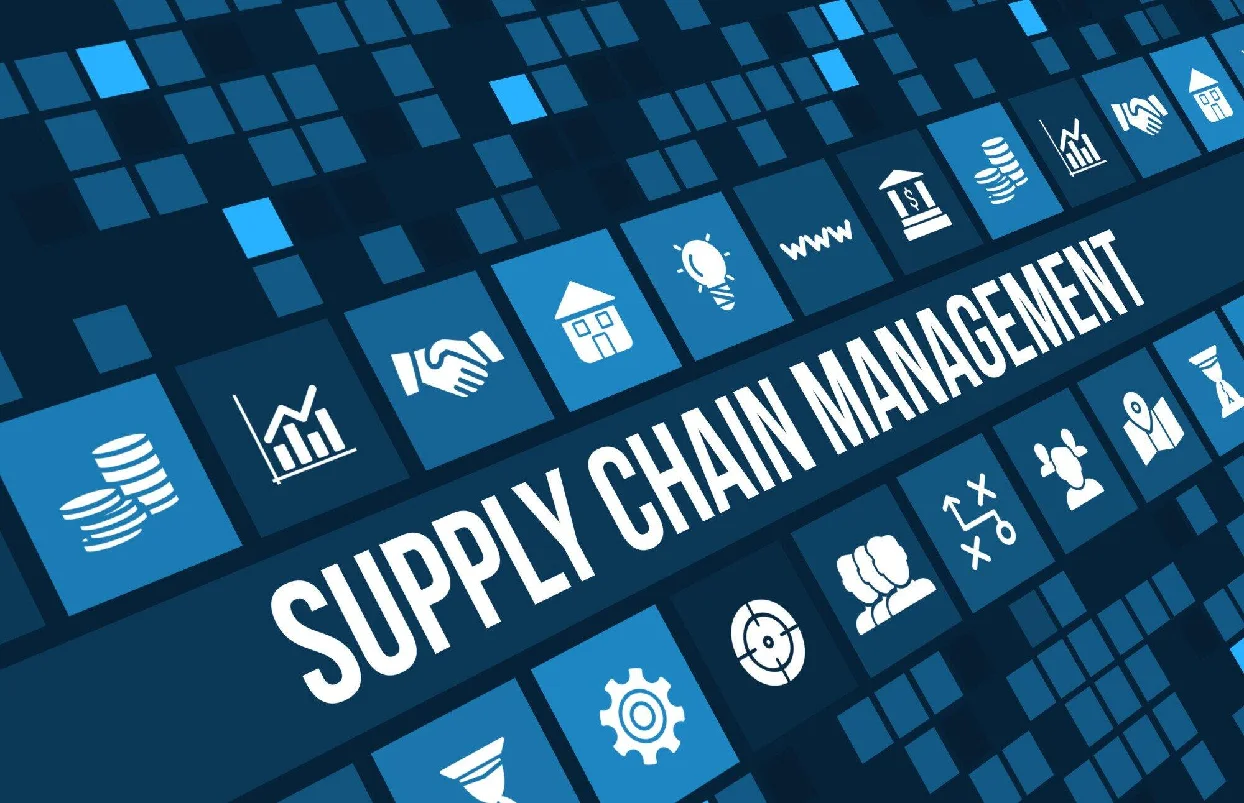BUSINESS
Managing an Efficient Supply Chain: Tips, Strategies, and Best Practices

You have a great product, customer base, and technology to take and process orders. Everything internally works great until you face a delay in your supply chain that causes shipping delays and unsatisfied customers.
Unfortunately, this is a common scenario for unprepared businesses. They don’t do enough to predict demand or find reliable partners and end up in a tight spot.
That’s where an efficient supply chain shines, preventing delays and keeping your organization running smoothly. The question is, how can you optimize your supply chain for success? Let’s dive in.
Find the Right Partners
The right partners can make or break your supply chain strategy. You can have the best operation in-house, but if your suppliers don’t ship on time, it completely throws off your inventory system and increases supply chain risks.
Find suppliers known to offer excellent service. This will minimize risk and avoid costly issues when you run out of inventory. It’s also wise to find secondary suppliers when your primary ones don’t deliver results.
Some industries offer cooperatives to capitalize on purchasing power through collaborative negotiation. Education cooperatives, for example, develop and maintain higher education and K-12 procurement contracts.
Optimize Your Inventory
Inventory management solutions is a math problem. You have an estimated number of future orders and limited warehouse space. What’s the ideal amount of stock to fulfill demand and minimize used space?
If you have too much inventory, you have capital in stock. But if you have too little, you may run out of stock and miss orders. Find the middle ground to maximize capital usage.
Gather Data
You shouldn’t handle logistics planning based on your gut feeling. Even if you mostly make good decisions, data can give you an edge that reduces decision-making time and avoids mistakes.
Capture as much data as you can from your supply chain. This includes supplier shipping times, order sell-through, popular products, customer shipping times, and everything else. Learn how Calculum’s platform works to see how you can put this data to use and improve your supply chain operations.
Automate Where Possible
Supply chains can get complex over time; when that happens, you may spend a lot of time managing things. However, there are tools available to make things easier.
Many tools offer automation features to reduce the workload. For example, you can set alerts when stocks drop below a certain level to notify you about the stock levels. Find places like this to reduce manual work wherever possible.
Perform Regular Reviews
Your supply chain operations will change over time, which means your current plan may not work in the future. This change can happen gradually, so you must review your current operation to spot any issues.
Use reviews to spot weaknesses that may lead to supply chain failure. Update your operational guidelines as changes occur to keep everything running smoothly.
Create an Efficient Supply Chain
A supply chain can make or break or product company. You need to get new products in on time, ship them to customers, and keep customers happy. Any delay during this process leads to unhappy consumers who leave bad reviews.
That’s why you must do whatever is possible to create an efficient supply chain. Use the advice above to optimize supply chain management and ensure your operation runs smoothly.
Are you planning to scale your business after finishing logistics planning? Learn more about scaling a company by reading the latest business articles on the blog.
BUSINESS
Milyom: The Power of Mindset and Momentum for Growth

Introduction to Milyom and its Philosophy
Welcome to the world of Milyom, where transformation begins with a shift in mindset. Have you ever felt stuck or overwhelmed, unsure of how to break free from your limitations? If so, you’re not alone. Many people struggle with finding their path to personal growth and success. That’s where Milyom comes into play—a philosophy that emphasizes the incredible power of mindset combined with unstoppable momentum.
Milyom encourages individuals to harness their thoughts and beliefs as catalysts for change. It’s about recognizing that our mindset shapes our reality and fuels our journey towards achieving goals we once deemed impossible. But it doesn’t stop there; building momentum is equally crucial in this process. Together, these elements create a dynamic force propelling us toward lasting growth.
Ready to explore how adopting a Milyom perspective can transform your life? Let’s dive deeper into this empowering philosophy!
Understanding the Power of Mindset for Personal Growth
Mindset shapes our perception of the world. It influences how we respond to challenges and opportunities. A growth mindset opens doors. It allows us to see failures as stepping stones rather than roadblocks.
When we embrace this perspective, personal growth becomes a natural part of our journey. Each setback transforms into a lesson learned, fueling motivation for future efforts. Instead of feeling defeated, individuals become resilient thinkers ready to tackle new experiences.
Adopting a positive mindset encourages curiosity and exploration. This attitude fosters creativity and innovation in problem-solving. When you believe in your potential, the possibilities expand significantly.
Milyom emphasizes this transformative power of mindset as essential for self-improvement. It’s about nurturing beliefs that support progress instead of hindering it. By cultivating an empowering inner dialogue, anyone can unlock their true capabilities on the path to success.
The Importance of Momentum in Achieving Goals
Momentum is a critical component in the journey toward achieving goals. It acts as the driving force that propels you forward, transforming aspirations into tangible outcomes. When you build momentum, each small win reinforces your motivation and commitment.
Think of it like riding a bike downhill. Once you begin to move, it’s easier to keep going. The more progress you make, the less effort it takes to maintain speed. This principle applies directly to personal growth and goal achievement.
Creating consistent habits can help establish this momentum. Small actions taken regularly compound over time, leading to significant changes in your life trajectory. Even on tough days, maintaining these habits ensures that you’re still moving ahead—albeit at a slower pace.
Recognizing moments of progress can further fuel this cycle. Celebrate those achievements along the way; they serve as reminders that you’re on track and capable of reaching even greater heights with sustained effort.
How to Develop a Milyom Mindset?
To develop a Milyom mindset, start by embracing self-awareness. Reflect on your thoughts and beliefs. Identify limiting patterns that hold you back.
Next, practice positive affirmations daily. These simple yet powerful statements can reshape your inner dialogue and boost confidence. Speak kindly to yourself; words have immense power.
Define your goals with precision and clarity to guide your path forward. Visualize your goals vividly—see them, feel them, live them in your mind’s eye.
Keep company with people who motivate and encourage your growth. Their energy will help reinforce your new mindset.
Cultivate resilience by viewing challenges as opportunities for growth rather than setbacks. Embrace failures as stepping stones toward success; learn from each experience without losing momentum.
Tips for Maintaining Momentum on Your Journey
Staying motivated can be challenging. To maintain momentum, celebrate small wins regularly. Each step forward deserves recognition.
Create a routine that energizes you. Consistency builds habits, and habits foster progress. Find what works for you—morning rituals or evening reflections.
Connect with others who share your goals. Sharing experiences boosts motivation and provides accountability. Engage in communities or groups that inspire growth.
Visualize your success often. Picture where you want to be and the steps needed to get there. This mental exercise reinforces commitment to your journey.
Don’t forget self-care. Taking breaks refreshes the mind and body, allowing for sustained energy as you push forward toward new milestones on your path of growth through Milyom principles.
Real-Life Success Stories from Milyom Practitioners
Milyom has transformed countless lives, and the stories of its practitioners shine brightly. Take Sarah, for instance. She was stuck in a monotonous job but embraced the Milyom philosophy. With a renewed mindset, she launched her own business within six months.
Then there’s James, who struggled with self-doubt. Through Milyom principles, he learned to shift his perspective and build confidence. Today, he’s a motivational speaker inspiring others.
Maria’s journey is equally motivating. After years of feeling lost in her career path, she focused on maintaining momentum through daily goals set by Milyom strategies. Now she thrives as an author.
Each story reflects resilience and determination fueled by the power of mindset and consistent action—cornerstones of what it means to live by the tenets of Milyom. These individuals are proof that change is possible when you commit to this transformative approach.
Conclusion and Encouragement to Embrace Milyom in Your Life?
Embracing the philosophy of Milyom can be a transformative journey. By adopting a mindset that focuses on growth and potential, you’ll discover new ways to approach challenges. It’s not just about thinking positively; it’s about cultivating resilience and an unwavering belief in your ability to improve.
Momentum plays a key role as you navigate through this process. Small wins build confidence, creating a cycle of achievement that propels you forward. Every action you take, big or small, plays a vital role in your progress.
As you continue down this path, keep the principles of Milyom close to heart. Surround yourself with inspiring stories from others who have walked similar paths—these narratives serve as powerful reminders that change is possible.
Every day presents an opportunity for growth when viewed through the lens of Milyom. Embrace this philosophy wholeheartedly and watch as doors open before you, leading to personal fulfillment and success beyond what you imagined possible. Your journey towards transformation starts now; take that first step today!
FINANCE
WUVISAAFT Explained: Visa & Western Union Transfers

In today’s fast-paced world, sending money across borders has never been easier. But with so many options available, how do you know which one to choose? Enter WUVISAAFT—a revolutionary service that combines the reliability of Visa with the global reach of Western Union. Whether you’re supporting family abroad or making business transactions, understanding WUVISAAFT can make a significant difference in your money transfer experience. Let’s dive into what makes this innovative service stand out in an ever-evolving financial landscape.
What is WUVISAAFT?
WUVISAAFT is an innovative service that merges the strengths of Visa and Western Union. This unique collaboration allows users to send money internationally with ease and efficiency.
At its core, WUVISAAFT streamlines cross-border transactions. It leverages Visa’s extensive payment processing network alongside Western Union’s vast global presence. This means you can transfer funds to nearly any country in the world without hassle.
The platform is designed for both individual consumers and businesses seeking reliable solutions for international payments. Users benefit from a user-friendly interface, making it easy to navigate through various options.
With WUVISAAFT, sending money feels less like a chore and more like an accessible part of everyday life. Whether it’s paying bills or supporting loved ones overseas, this service aims to simplify your financial exchanges across borders.
How does it work?
WUVISAAFT operates by seamlessly connecting Visa card holders with Western Union’s vast transfer network. The process begins when a user opts to send money using their Visa card through the WUVISAAFT platform.
Once initiated, the service processes the transaction quickly and securely. Users enter recipient details and select an amount to send. This information is encrypted for safety.
Next, funds are transferred instantly or within a few hours, depending on the destination country. Recipients can collect cash at local Western Union locations or have it deposited directly into their bank accounts.
Throughout this entire procedure, real-time tracking allows users to monitor their transfers effortlessly. Notifications keep both sender and receiver informed until the money is successfully delivered. The combination of convenience and speed makes WUVISAAFT a popular choice for those needing reliable international transfers.
Benefits of using WUVISAAFT
WUVISAAFT offers a range of advantages that make it an attractive option for those needing seamless financial transactions. One significant benefit is speed. Transfers are typically processed much faster than traditional methods, allowing funds to reach recipients within minutes.
Another key advantage is the convenience factor. Users can initiate transfers from their homes or on-the-go via mobile devices, eliminating the need to visit a bank branch. This flexibility caters to modern lifestyles and busy schedules.
Additionally, WUVISAAFT provides competitive exchange rates and lower fees compared to conventional banking options. This cost-effectiveness can be particularly beneficial for frequent senders or larger transactions.
Customer support also stands out with WUVISAAFT. Users have access to assistance whenever needed, ensuring questions or issues are addressed promptly without unnecessary delays in service delivery.
Comparison to traditional bank transfers
When comparing WUVISAAFT to traditional bank transfers, several differences emerge. Traditional methods often involve lengthy processing times. Transfers can take days, leaving users in uncertainty.
WUVISAAFT stands out with its fast transactions. Funds are typically available within minutes. This immediacy appeals to those needing quick access to money.
Fees also differ significantly. Banks frequently have hidden charges that add up quickly. With WUVISAAFT, clarity is key; you know the costs upfront.
Accessibility plays a role too. Traditional banks may require you to visit a branch or use their specific platforms. WUVISAAFT offers flexibility through various online channels and locations, making it more convenient for many users.
Customer service experiences vary greatly between the two options. Bank support can be slow and automated at times while WUVISAAFT aims for responsive assistance tailored to individual needs.
Safety and security of WUVISAAFT
Safety is a primary concern for anyone sending or receiving money. WUVISAAFT prioritizes the protection of user information and funds.
The platform employs advanced encryption technologies to safeguard transactions. This means your personal data remains confidential throughout the transfer process.
Additionally, both Visa and Western Union have established reputations for security in financial services. Their combined expertise enhances trust in WUVISAAFT.
Fraud monitoring systems are active 24/7, detecting suspicious activities almost instantly. Users can report any concerns directly through customer support channels that are readily available.
With these robust measures, clients can feel confident using WUVISAAFT for their financial needs without compromising safety.
How to use WUVISAAFT
Using WUVISAAFT is straightforward and efficient. First, ensure you have an active Visa card linked to your Western Union account.
Start by logging into your Western Union profile. Navigate to the money transfer section, where you’ll find options tailored for various payment methods.
Select the WUVISAAFT option. Enter the recipient’s details accurately. This includes their name, location, and any other required information.
Next, input the amount you wish to send. Review all entered details carefully before proceeding with the transaction.
After confirming everything looks good, complete your payment using your Visa card. You’ll receive a confirmation message along with tracking information for peace of mind.
Keep this tracking number handy; it allows you to monitor the status of your transfer in real time as it reaches its destination efficiently.
Conclusion
WUVISAAFT simplifies the complexities of money transfers and visa payments. With its unique integration between Visa and Western Union, this service offers a streamlined way to send funds securely across borders.
The convenience of WUVISAAFT allows users to enjoy faster transactions compared to traditional banking methods. Plus, the added benefits like lower fees and accessibility make it an attractive choice for anyone looking to transfer money internationally.
As you explore your options for international money transfers, consider how WUVISAAFT can serve your needs effectively while prioritizing safety and security. Whether you’re sending remittances or making payments abroad, this innovative solution opens doors for seamless financial interactions globally. For those who value efficiency in their monetary dealings, WUVISAAFT stands as a compelling option worth considering.
BUSINESS
7 Cybersecurity Tips for Registered Investment Advisors (RIAs)

Many advisors quietly admit that cyber risk keeps them on edge. Just as a sudden cloudburst can flood a clear road, a single overlooked vulnerability can spill sensitive client data across the wrong screens. It may sound dramatic, but everyday attacks on firms handling retirement savings and life-planning assets are now routine.
Strong cybersecurity for RIAs isn’t about chasing the latest shiny tools. It’s about having a clear strategy, reliable controls, and consistent follow through so client trust never feels fragile. Below are seven practical tips that line up with SEC expectations and everyday common sense.
Tip 1: Get Clear On The Cyber Threats Facing Your RIA
You can’t protect what you haven’t mapped. Phishing, social engineering, and ransomware routinely target advisory firms, and one industry survey recently showed that nearly half of smaller RIAs experienced at least one attempted breach in the past year.
Start by taking inventory of your digital footprint:
- All external systems: custodians, CRMs, planning tools, client portals, cloud storage
- Internal assets: file shares, laptops, remote access tools, admin accounts
Then ask blunt questions:
- Who can reach what, and from where?
- Are there shared logins or dormant accounts still active?
- Which systems, if compromised, would stop you serving clients today?
Even a simple spreadsheet mapping assets, access, and business impact will give you a clearer picture of where an attacker might try to sneak in – and where your attention should go first.
Tip 2: Build An SEC-Aligned Cybersecurity Program
Once risks are visible, you need a structured program that speaks the same language as regulators. The SEC expects RIAs to have written, risk-based cybersecurity programs, not a pile of ad-hoc fixes.
A practical starting point:
- Create a short control matrix that lists key safeguards (multi-factor authentication, logging, backups, vendor oversight, etc.)
- Map each safeguard to relevant SEC guidance and your own risk assessment
- Set a review cadence (quarterly or semiannual) to reassess controls and document changes
Keep the framework simple, but explicit. When exams arrive, you want to show how your program is designed, how it is maintained, and how it evolves as your firm grows – not scramble to reconstruct decisions from memory.
Tip 3: Turn Expectations Into Written Policies
Verbal rules vanish. Written policies endure. Clear documentation is the bridge between “we meant to” and “we can prove it.”
Focus on a few core areas:
- Data handling and retention
- Password and authentication standards
- Access reviews and approval workflows
- Vendor onboarding and ongoing oversight
Provide new hires with a short, plain-language policy guide on day one and keep a central digital folder with the full policy set. Run quick monthly spot checks: are people following the password rules, using approved tools, and storing files where they should?
Well written policies help you run a smoother operation, and when regulators ask how your firm manages risk, you can answer with specifics rather than vague assurances.
Tip 4: Make Vulnerability Management A Routine, Not A Fire Drill
Many breaches start with something simple: an old plugin, an unpatched server, or a forgotten laptop. Regular vulnerability management turns those landmines into routine to-dos instead of emergency crises.
A workable rhythm might look like this:
- Run automated vulnerability scans at least once a month
- Tag high-value systems (e.g., client portals, email, file servers) for priority review
- Use a shared tracker or ticket system so remediation items are assigned and closed
- Align patch cycles with your scan schedule so fixes never drift for months
Each scan and patch round costs far less than a real incident response engagement. Over time, this cadence becomes part of your operational heartbeat and a strong story to share in SEC exams.
Tip 5: Treat Security Awareness Training As An Ongoing Habit
Technology can block a lot, but a single careless click can still open the door. Staff education is your frontline filter.
Effective programs are:
- Short and frequent – think quarterly micro-sessions, not annual marathons
- Practical – real phishing examples, password guidance, secure remote work tips
- Measured – simulated phishing campaigns with simple dashboards
Share results in a constructive way. Recognize teams that report suspicious emails and highlight improvements across the firm. Positive reinforcement tends to build a culture where people feel responsible for security instead of afraid of making mistakes. Over time, you’ll see fewer risky clicks and more quick flags when something looks “off.”
Tip 6: Partner With Cybersecurity Specialists Who Understand RIAs
At some point, checklists and best-effort internal reviews are not enough. Working with experts who live in the RIA world can close gaps you didn’t realize were there.
Our cybersecurity advisors at CyberSecureRIA focus specifically on advisory firms and understand SEC and FINRA expectations in detail. During discovery sessions, they can:
- Review policy drafts, network diagrams, and training logs
- Identify weak spots in access controls, logging, and vendor management
- Outline a prioritized remediation roadmap with realistic timelines
You also gain access to a help desk that understands the tools RIAs actually use – from custodial platforms to planning software. Having specialists on call can turn complex regulatory requirements into clear, manageable steps.
Tip 7: Prepare An Incident Response And Business Continuity Playbook
Even with solid defenses, something can still go wrong. When that happens, you need a script – not a scramble.
A strong plan should:
- Define how issues are detected and who receives alerts
- Assign roles for containment, communication, regulatory notifications, and recovery
- Include a tested backup and restore strategy, with at least twice-yearly drills
- Spell out alternative ways to serve clients if core systems go offline
Walk the team through tabletop exercises: simulate a ransomware event, a lost laptop, or a compromised email account. Document what worked, what didn’t, and what you changed afterward. When a real incident happens, your firm will respond with purpose instead of confusion.Thoughtful cybersecurity for RIAs isn’t about fear – it’s about control, preparation, and respect for the trust clients place in you. With clear visibility into risks, written programs aligned with SEC expectations, consistent training, and expert support from partners like CyberSecureRIA, your firm can face digital threats with confidence instead of anxiety.

 BUSINESS10 months ago
BUSINESS10 months agoBrand Visibility with Imprint Now and Custom Poly Mailers

 TECHNOLOGY8 months ago
TECHNOLOGY8 months agoDizipal 608: The Tech Revolution Redefined

 HEALTH9 months ago
HEALTH9 months agoHappy Hippo Kratom Reviews: Read Before You Buy!

 HOME IMPROVEMENT9 months ago
HOME IMPROVEMENT9 months agoThe Do’s and Don’ts of Renting Rubbish Bins for Your Next Renovation

 BUSINESS10 months ago
BUSINESS10 months agoExploring the Benefits of Commercial Printing

 HEALTH5 months ago
HEALTH5 months agoYour Guide to Shedding Pounds in the Digital Age

 LIFESTYLE10 months ago
LIFESTYLE10 months agoThe Disciplinary Wives Club: Spanking for Love, Not Punishment

 ENTERTAINMENT2 months ago
ENTERTAINMENT2 months agoExploring the Kristen Archives: A Treasure Trove of Erotica and More












